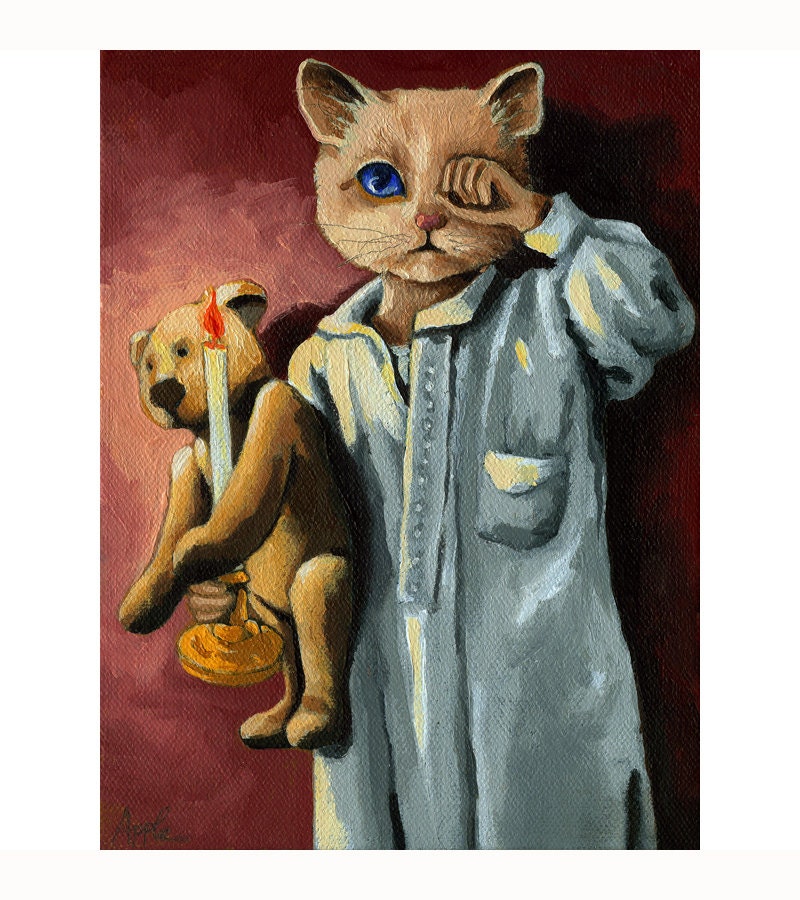 |
| Photo: costumesgalore.net |
Aluminum foil is another modern convenience I love to have when the lights go out. It's actually pretty cool to use when they're on, too. Lining counters, tables, walls, etc with foil, shiny side out, reflects light back to where you can use it. Look at your car headlights and you'll see the same principle in use. It also protects surfaces from candle drippings. If foil isn't an option for your characters, putting the light sources near light-colored or shiny surfaces will help a lot. The last time we had an ice storm that caused an outage, I took all the dull-colored items off a deep kitchen shelf and left only glassware, metal tins, glazed ceramics, etc. The lamp we placed there seemed nearly twice as bright after I made that change.
 |
| Photo: dollshouse.com |
Candles work best in groups. If your character needs to walk with a light, there's a special kind of candleholder for that, with a handle and a drip catcher.
Kerosene lamps can also burn liquid paraffin (lamp oil). The paraffin smells better but the kerosene is a lot more economical. These were my family's main source of light during my teen years when we had no electricity, and I learned how to get the most light from them. It makes me laugh when I see a rerun of Little House on the Prairie with a kerosene lamp flickering. A flickering flame means that either the wick is turned up too high or the fuel level's too low. Either way, if it's flickering, then it's smoking, and pretty soon the inside surface of the chimney will be covered in soot and the lamp will be useless. I'm pretty sure the Ingalls family didn't get out a new lamp every ten minutes so they could see to eat their supper. In the next "Survival" post, I'll share tips on how to get the most light from a kerosene lamp.
Gas lamps and Coleman lanterns are the brightest non-electric lights I've seen.
A railroad lantern is great for traveling with. It has a convenient bail handle, won't blow out like a candle and is a lot safer to carry than a lamp. It's still not safe like a flashlight, though.

A new hydro power technology is being developed by Sarfraz Ahmad Khan of Pakistan. In theory these hydro plants would not require a reservoir and would have a minimal impact on the environment. They could be run side-by-side in rows and would be much cheaper to build, operate and maintain. Sarfraz has high hopes that his ideas could revolutionize hydro power in his country and across the globe. He is currently seeking expert confirmation of his ideas; this article provides a brief summary of his ideas along with some of the 3D images he has created. You can help him by leaving your comments at the bottom of the page, or by joining the discussion that inspired this article. In the early 19th century, an increasing number of scientists became interested in electricity.
ReplyDeletehydro electric | hydro electric power | what is hydro electric | inventhistory | power generator | wind power generator | solar and power | electric transportation
Visit the website and get more information => www.inventhistory.com